The history of churches in Pakistan goes back to the 16th century when Christian missions began arriving in the sub-continent after the advent of the East India Company. When Pakistan came into existence following British rule, a number of churches established for the British Army officers and their families to congregate became a part of the country. In 1970, the Church of Pakistan was formed, uniting Anglican, Methodist, Lutheran and Presbyterian churches.
A majority of these churches were constructed during the British era. Therefore, the architecture and interior of these religious buildings mirror the designs of old English churches with striking turrets, majestic domes, and arched glass windows.
With Christians being the second-largest religious minority in the country, the government has worked to preserve and renovate these century-old churches. In fact, some of these spectacular structures symbolizing Christianity in Pakistan are now considered national monuments.
Historical Churches in Pakistan
Here is the list of churches in Pakistan that are known for their historical importance and stunning architecture.
St. Patrick’s Cathedral, Karachi
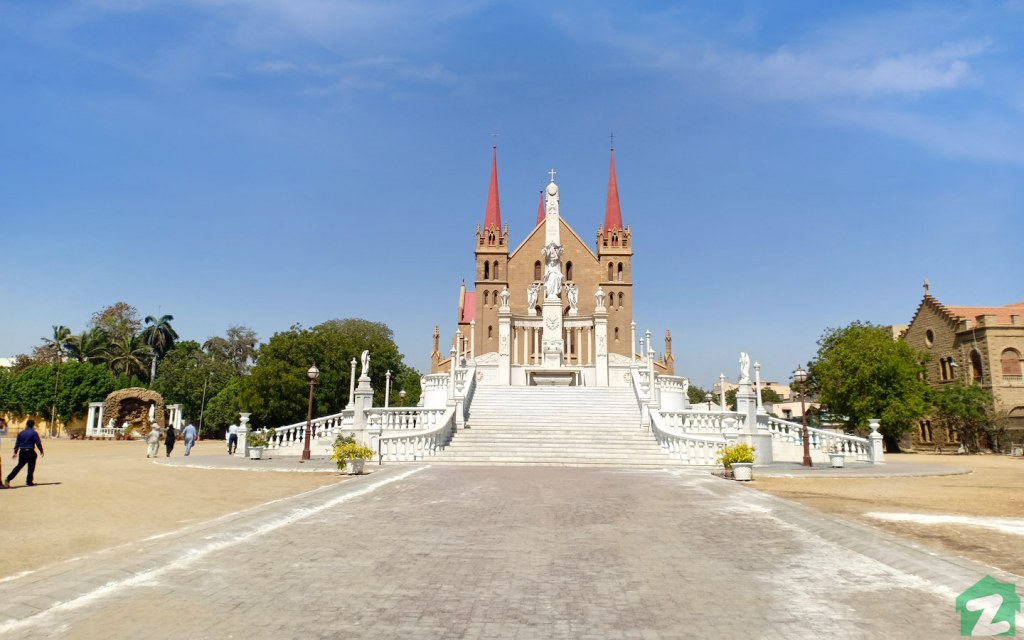
Built on the grounds of the oldest church in Karachi, and arguably Sindh, St. Patrick’s Cathedral dates back to 1881. The 170-foot architectural wonder is located near Empress Market in Saddar Town. It was constructed next to the St. Patrick’s Church, built in 1845, to accommodate the growing Catholic community in the area. It is considered the largest cathedral in Karachi.
The church initially stood next to the cathedral for a few years. But it was unfortunately destroyed during a storm in 1885.
Like most famous churches in Pakistan, St. Patrick’s Cathedral was also built during the British Colonial era, which is quite evident in its design. The beautiful red-brick building with its arched windows and stained glasses illustrating different religious scenes is one of the most popular tourist attractions in Karachi. It can hold about 2,000 people at a time, making it one of the biggest churches in Pakistan.
While the cathedral itself is a sight to marvel at, the awe-inspiring Monument to Christ the King on the premises is the first thing that draws visitors’ attention when they enter the boundary wall. The 54 feet tall white-marbled monument was built in 1931 and holds the statue of prominent Christian missionary St. Francis Xavier.
In 2003, the government declared St. Patrick’s Cathedral a protected monument under the Sindh Cultural Heritage Protection Act because of its cultural importance and historic Gothic Revival architecture.
St. Paul’s Church, Rawalpindi
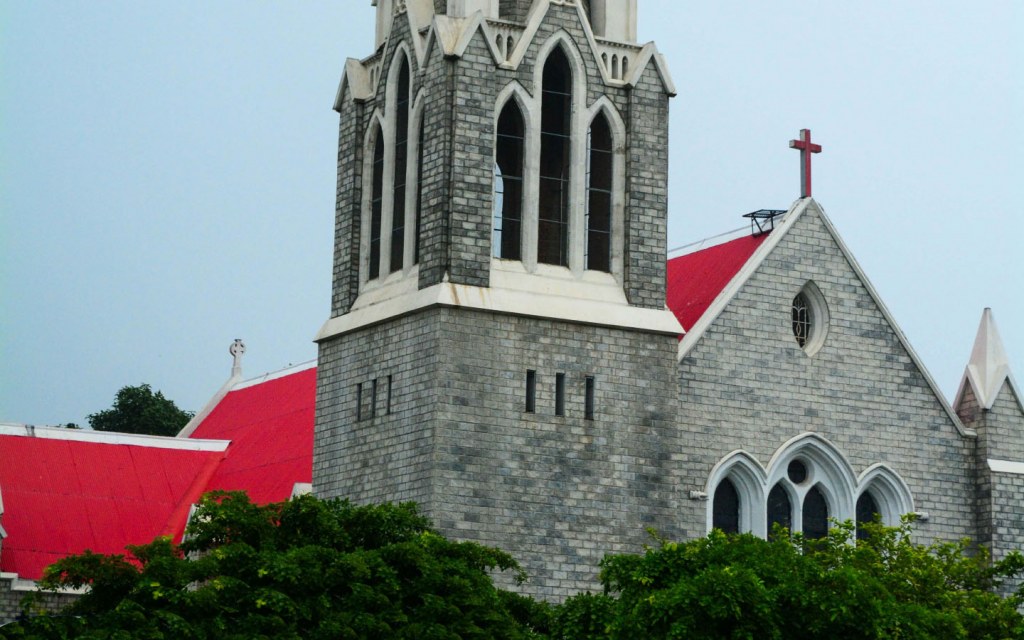
The foundation of St. Paul’s Church was laid in 1876, making it one of the oldest churches in Rawalpindi. However, the first formal service wasn’t held there until 1908, when the Scottish soldiers in the British Army’s Northern Command were summoned for communal worship. Constructed by the Church of Scotland, the church was handed over to the Presbyterian Church after the creation of Pakistan in 1947.
St. Paul’s Church is located opposite General Headquarters (GHQ) in Rawalpindi.
Like most buildings constructed during the British Colonial era, the church used to have a red-brick exterior with wooden ceilings. However, it was painted grey a couple of years ago during renovations. The large stained-glass windows on each side of the main praying hall illustrate images of Jesus and the Virgin Mary.
St. Paul’s Church can accommodate almost 800 parishioners at a time and has been providing baptism services for over 100 years.
St. Mathew’s Church, Nathiagali
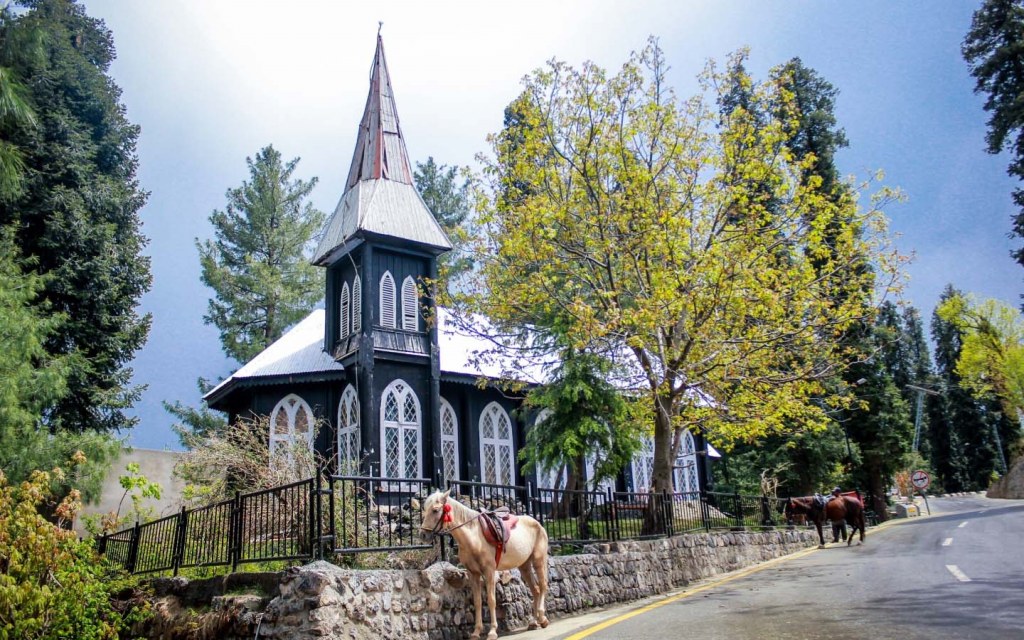
Yet another place of worship built over a century ago, St. Matthew’s Church in the scenic hill station of Nathia Gali in Khyber Pakhtunkhwa is certainly one of the most beautiful churches in Pakistan. Surrounded by tall spruce trees against the backdrop of mesmerizing green mountains, which get completely covered in snow during the winter months, this picturesque church will leave you in awe with its spellbinding beauty.
The church, which is almost entirely made out of cedarwood, was also built during the British reign. However, it is still active and can be reached after a small hike from the main Nathia Gali market area. That’s where most hotels and restaurants are located.
Moreover, the church is next to Paradise Point. It’s a famous picnic spot with several rides for children and a number of canteens for light refreshment. There are usually a lot of horses available in the area, meant for visitors to ride for a small fee.
The quaint St. Matthew’s Church is one of the most popular tourist attractions in the area.
St. Mary’s Cathedral, Multan
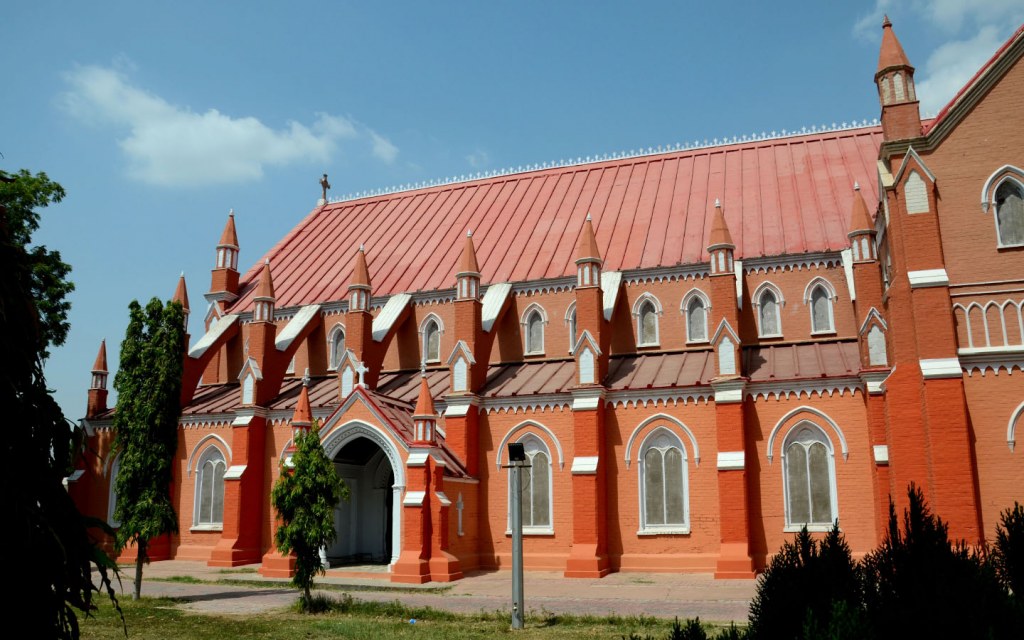
The 170-year old St. Mary’s Cathedral is certainly a sight to behold. Considered one of the largest and oldest churches in Multan, the cathedral is located on Qasim Road in the Cantt area. It was built primarily for the British Army personnel stationed in the region.
The church’s foundation was laid in 1848, but according to some accounts, the construction was completed over the next 10 years. The majestic building also houses the Bishop of Multan and is considered an important historical monument by visitors and locals alike.
In 2013, the Pakistan Army worked with the civil society of Multan to renovate St. Mary’s Cathedral. The revocation cost more than 5 million rupees at the time.
The elegant red building, constructed in the Gothic architectural style of old European churches, has tall arched windows and wooden ceilings. Most of the materials used in its construction, including tiles, wood, metals, glass, and the church bell, were reportedly imported from England.
Sacred Heart Cathedral, Lahore
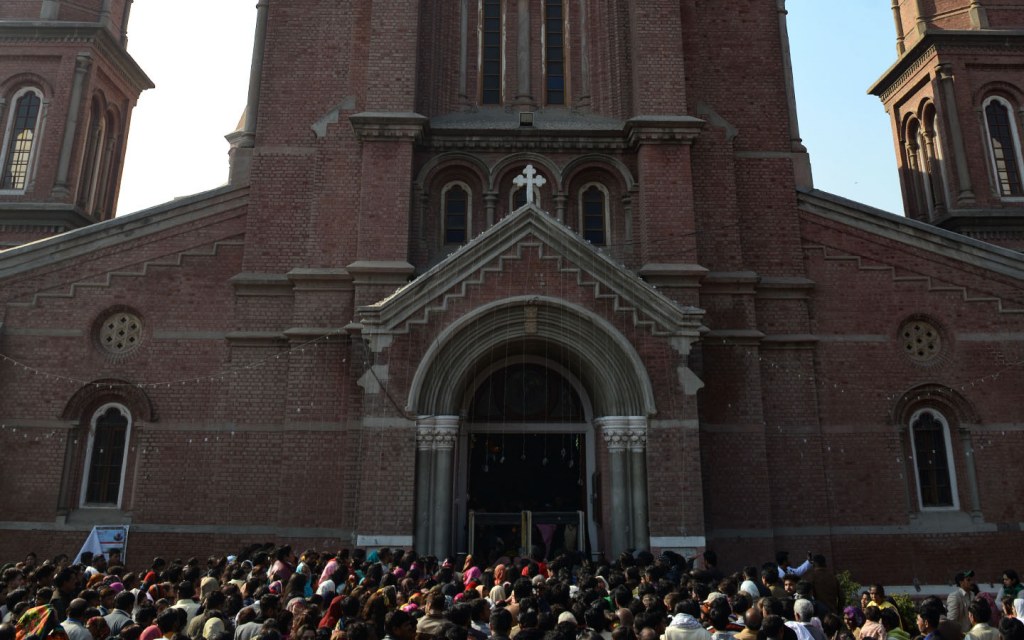
Designed by a Belgian architect named Edouard Dobbeleers, the grand Sacred Heart Cathedral in the historic city of Lahore dates back to 1907. The Roman-Byzantine-style building was built to serve as the main church of the Roman Catholic Archdiocese of Lahore in the pre-partition sub-continent.
It continues to be one of the most popular and busiest churches in Lahore. The main prayer hall in the Sacred Heart Cathedral can accommodate nearly 1,500 worshippers at a time. Located on Lawrence Road, the elegant British era structure boasts a signature wide dome and tall turrets that can be seen from far away. In fact, this church has become a popular tourist attraction in Lahore.
The building also has a famous boys’ school on its premises, called St. Anthony’s School. A number of prominent army officers, sportsmen, journalists, legislators and politicians – including former Prime Minister Nawaz Sharif and former Speaker of National Assembly Sardar Ayaz Sadiq – are among the alumni of the prestigious institute.
St. John’s Cathedral, Peshawar
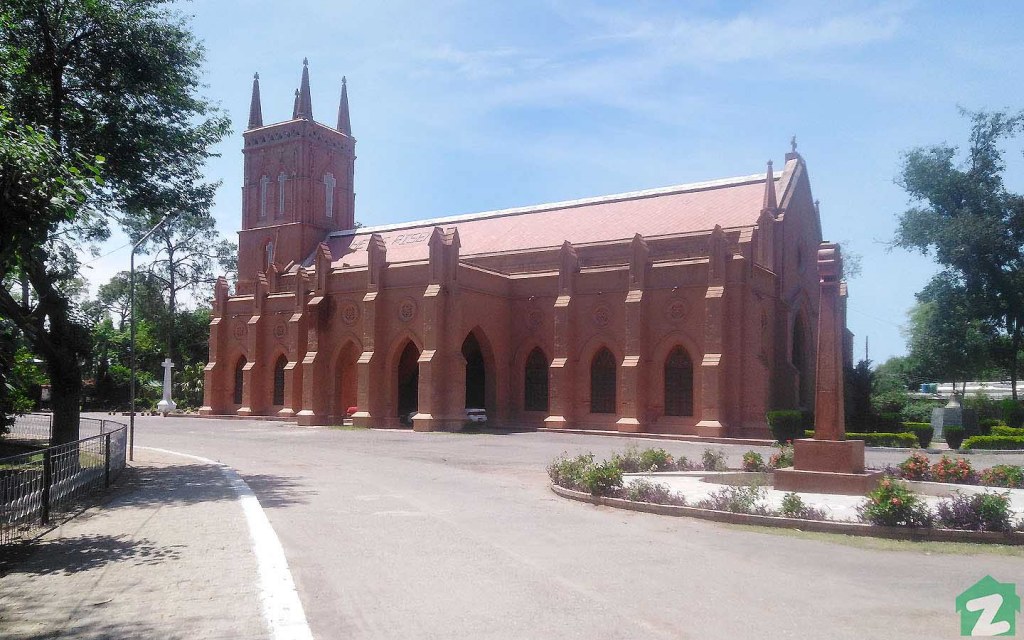
St. John’s Cathedral in Peshawar is one of the oldest churches in Khyber Pakhtunkhwa. Constructed between 1851 and 1860, the building was originally known as St. John’s Church. It served as a garrison church for the British soldiers who were stationed in the area along with their families. A number of British officers who died while fighting on the frontier were buried in the cemetery near the main building.
St. John’s Church, a glorious building reminiscent of the old European churches, was given the status of a cathedral in 1982. The church is the property of the Anglican Diocese of Peshawar. It is one of the eight Dioceses that constitute the Church of Pakistan.
During their historic trip to the country back in the 1960s, Queen Elizabeth II and the Duke of Edinburgh Prince Philip also made headlines for visiting St. John’s Cathedral and offering services there.
An important historical monument in the city, the cathedral can house approximately 700 people at a time.
Given the fact that Pakistan has such a rich cultural history, there is no shortage of historical buildings across the country that will leave you speechless. If you have an interest in ancient architecture, take a look at some of the historical forts in Pakistan that everyone must visit at least once.
For more information on important landmarks and historical buildings in the country, stay tuned to Zameen Blog, the best lifestyle blog in Pakistan. You can also write to us at blog@zameen.com and visit our Facebook page for the latest lifestyle and real estate-related updates.



